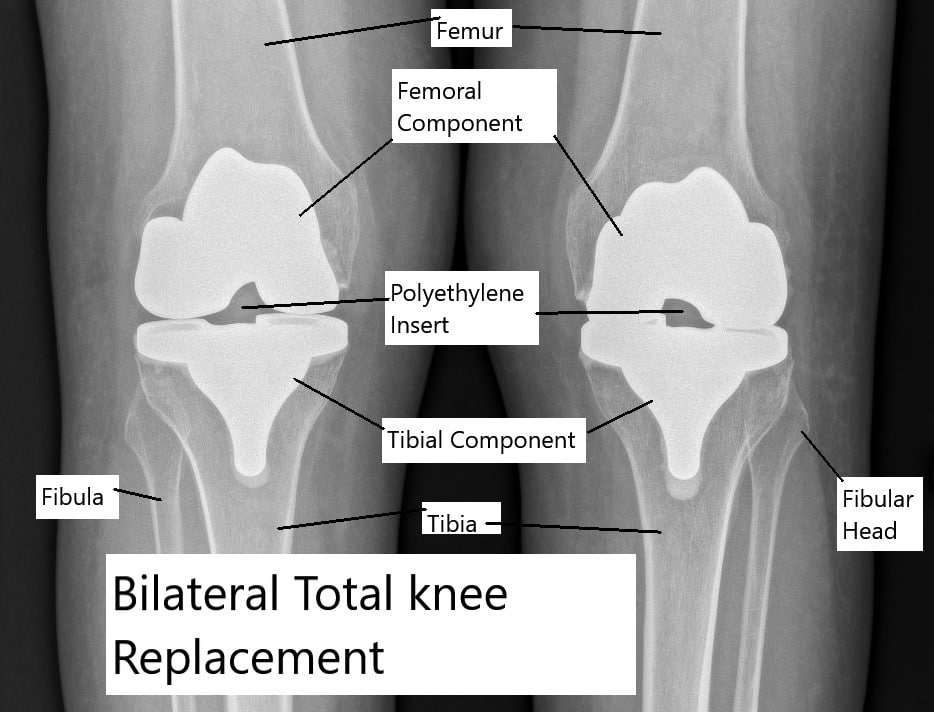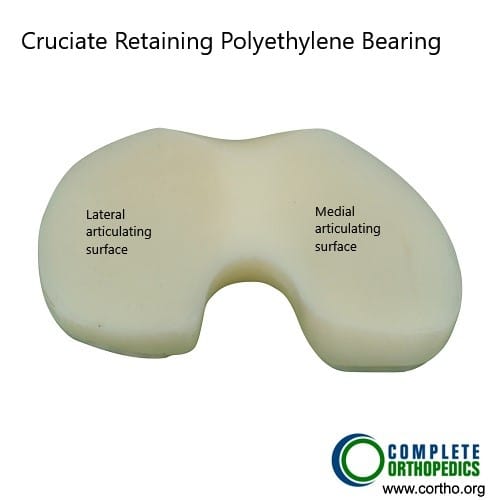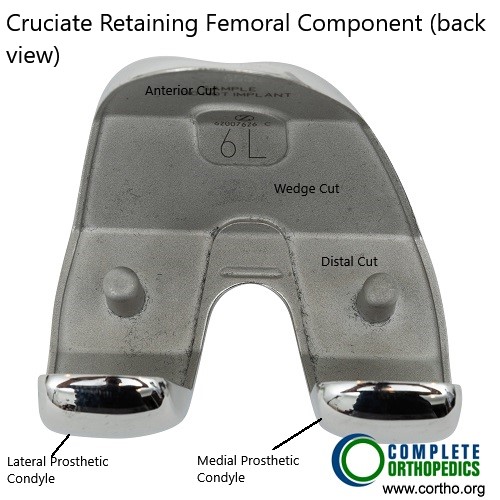Bilateral Knee Replacement (Simultaneous)
If knee discomfort becomes intense enough to interfere with daily routines or is joined by swelling, sensitivity, or redness, it’s crucial to obtain medical help.
At Complete Orthopedics, our proficient knee physicians are experts in managing knee discomfort through surgical and non-surgical approaches. We assess symptoms, pinpoint the issue, and recommend appropriate treatments, including surgery if needed.
We serve New York City and Long Island and collaborate with six hospitals, providing leading-edge knee surgery and extensive orthopedic services. You can schedule a consultation with our orthopedic surgeons online or via phone.
Explore common reasons for knee pain and the available treatment options, including when opting for surgery is most recommended.
Overview
A total knee replacement is a surgical procedure to replace the ends of the bones forming the knee joint with prosthetic parts. One of the most commonly performed surgeries by orthopedic surgeons, the surgery has evolved over the past decades. With improvements in techniques, implants, and instruments, patients are able to get back to their routines sooner.
Osteoarthritis is the most common cause of knee pain requiring joint replacement surgery. The arthritis is usually initially managed with conservative treatments before going for joint replacement. Conservative management includes physical therapy, nonsteroidal anti-inflammatory drugs, cortisone injections, and viscosupplementation.

Total knee replacement of both knees.
Often both the knees may be involved in which conservative management has failed.
The surgery may be performed in a single operation known as Simultaneous Bilateral total knee replacement (SBTKR). Bilateral total knee replacement may also be performed in a staged manner, usually, the second knee is replaced after an interval of 3 months or more.
The decision regarding staged or simultaneous surgery depends on a number of patient factors. If there are no limitations for simultaneous surgery, the pros and cons of the simultaneous procedure are discussed with the patient.
Ideally, a patient scheduled for simultaneous bilateral knee replacement is often younger in age, nonobese, and free from cardiopulmonary comorbidities. Any chronic heart, lung, or kidney disease may increase the risks of surgery for both the knee together.
Research Insights
Safety Concerns and Considerations:
SBTKR may carry increased risks, even among patients in good health. The findings suggest a higher complication rate compared to unilateral procedures, particularly within the first 30 days post-operation. These complications can range from blood loss to cardiovascular issues.
Advantages and Challenges: Despite the risks, SBTKR offers advantages such as a single period of hospitalization and rehabilitation, potentially reducing overall recovery time and minimizing disruption to patients’ lives. However, the immediate postoperative period requires careful management due to the increased strain on the body’s systems.
Patient Selection:
Not all patients are candidates for SBTKR. Ideal candidates are typically younger, healthier, and have good support systems at home. The risks must be carefully weighed against the potential benefits, and thorough preoperative assessments are crucial.
Long-Term Outcomes: Initial recovery may be more challenging, the long-term benefits, such as improved mobility and quality of life, can be comparable to those of StBTKR.
Economic Considerations: From an economic perspective, SBTKR might offer cost savings due to reduced total hospital stays and fewer rehabilitation sessions. However, these savings must be balanced against the potential for more intensive care following surgery and the costs associated with possible complications.

Cruciate retaining polyethylene bearing

Cruciate retaining femoral component
The above images show cruciate retaining polyethylene insert and femoral component. The cruciate retaining design is ideal for patients with non inflammatory knee disease and a healthy posterior cruciate ligament. The cruciate retaining design involves less cutting of the bone but the exposure during surgery is less as compared to the posterior stabilized design.
The patients undergoing simultaneous bilateral knee replacement often require less time off work. Although the patients may spend 1-2 days more in the hospital after the procedure they are able to save time required for the second surgery.
The patients are also able to get relief from pain and stiffness in both the knees. In a staged surgery, the patients tend to keep the operated knee in a similar position as the non operated knee. This may lead to reduced movements in the operated knee in case of a deformity in the unoperated knee.
The patients go through rehabilitation together for both the knees which leads to an earlier return to function without having to wait for a second surgery. The bilateral knee replacement is also more cost-effective than a staged procedure.
The simultaneous bilateral knee replacement usually has a higher risk of complications than a staged surgery. The surgery as well as the anesthesia time is prolonged in the case of simultaneous operation. The prolonged surgery may lead to increased blood loss, which may require a blood transfusion.
The risks of forming blood clots, infections, and cardiopulmonary complications are also significantly higher in the case of simultaneous bilateral knee replacement. The patients usually go to inpatient rehabilitation centers after the hospital stay. Although there is greater patient care at inpatient rehabilitation centers, often they are associated with increased infection risks.
With advances in total knee replacement, unless contraindicated a greater number of patients are undergoing simultaneous bilateral knee replacement surgery. If you are a candidate for bilateral knee replacement, discuss the pros and cons of a simultaneous procedure with your surgeon.
Expert Opinions
Orthopedic surgeons emphasize the importance of individualized patient care plans. According to experts, the decision between SBTKR and StBTKR should be made collaboratively by the patient and their healthcare team, considering all medical, physical, and lifestyle factors.
Patient Experiences
Patients who have undergone SBTKR often report intense initial recovery periods but appreciate the simultaneous improvement in both knees once they recover. In contrast, patients opting for StBTKR may experience a less demanding initial recovery but must prepare for a second recovery period when the other knee is replaced.
Conclusion
Bilateral total knee replacement, whether simultaneous or staged, offers significant benefits for patients with bilateral knee issues, but comes with distinct challenges. The choice between SBTKR and StBTKR should be guided by thorough evaluation and consultation with medical professionals, focusing on the patient’s overall health status, recovery goals, and personal preferences.
Read more about Knee Total Replacement here.
Do you have more questions?
What makes a patient a good candidate for SBTKR?
Good candidates are generally those without significant health issues such as cardiovascular disease or diabetes, are non-obese, and have a strong support system at home for postoperative care.
What are the primary risks associated with SBTKR?
The primary risks include increased blood loss, higher chances of cardiovascular complications, and a longer and more intense recovery period immediately after surgery.
How long is the recovery period for SBTKR?
Recovery can vary but typically involves several weeks of intensive physical therapy and limited mobility, with total recovery spanning several months to a year.
Are there any age restrictions for undergoing SBTKR?
There are no strict age restrictions, but younger, healthier patients tend to recover more quickly and with fewer complications.
How does SBTKR compare to staged bilateral knee replacement in terms of cost?
SBTKR may be more cost-effective due to a single hospital stay and one period of rehabilitation, though this can be offset by higher immediate postoperative care costs.
Can SBTKR be performed on patients with significant health issues?
It is generally not recommended for patients with significant health issues due to the increased risk of complications.
What is the success rate of SBTKR?
Success rates are high, with most patients experiencing significant improvement in knee function and pain relief, though this varies based on individual health factors.
What type of anesthesia is used during SBTKR?
General anesthesia is commonly used, though some cases may use spinal or epidural anesthesia depending on the patient’s health status and preferences
How long does the actual SBTKR surgery take?
The surgery typically lasts several hours, depending on the complexity and the surgeon’s experience.
What is the postoperative pain management for SBTKR?
Pain management usually involves opioids, non-steroidal anti-inflammatory drugs (NSAIDs), and sometimes nerve blocks or local anesthesia techniques.
What is the postoperative pain management for SBTKR?
Pain management usually involves opioids, non-steroidal anti-inflammatory drugs (NSAIDs), and sometimes nerve blocks or local anesthesia techniques.
How soon after SBTKR can a patient walk?
Most patients are encouraged to start walking with assistance as soon as the day after surgery to promote circulation and muscle strength.
What kind of physical therapy is required after SBTKR?
Intensive physical therapy, starting from the day after surgery, is crucial. It initially focuses on regaining mobility and strength and progresses to more demanding exercises.
Are there any lifestyle changes needed after undergoing SBTKR?
Patients are advised to maintain a healthy weight, engage in regular non-impact exercises, and avoid activities that put excessive stress on the knees.
What follow-up care is required after SBTKR?
Regular follow-ups with the surgeon, routine X-rays, and check-ups with a physical therapist are necessary to monitor recovery and prosthesis integrity
Can a patient undergo SBTKR if they have had previous knee surgeries?
Yes, but previous surgeries and their impacts on the knee joint and surrounding tissues will be considered during the preoperative assessment.
What is the rate of infection for SBTKR?
The infection rate is low but is slightly higher compared to unilateral knee replacement due to the larger surgical area and longer operative time.
What are the signs of a complication after SBTKR?
Signs include excessive pain, redness, swelling, fever, or drainage from the incision sites, indicating the need for immediate medical attention.
Is there a difference in the quality of life after SBTKR compared to unilateral knee replacement?
Quality of life improvements are comparable to unilateral replacement but can be achieved faster as both knees are addressed at once.
How does weight impact the outcomes of SBTKR?
Higher body weight can negatively affect the outcomes by increasing the stress on the new joints and potentially leading to quicker wear or complications.
What advancements have been made in SBTKR techniques?
Recent advancements include improved prosthetic materials and design, better preoperative planning tools like 3D imaging, and enhanced surgical techniques that minimize tissue damage and improve alignment.
What dietary considerations should be taken post-SBTKR?
A balanced diet rich in calcium, vitamin D, and protein is important to support bone health and muscle recovery.
Can complications from SBTKR be corrected with further surgery?
Yes, most complications can be addressed with revision surgeries, though these are generally more complex and have their own risks.
How should a patient prepare their home for recovery after SBTKR?
Home preparation includes removing trip hazards, installing safety rails in the bathroom, and ensuring a comfortable resting area that minimizes the need to climb stairs.
Is there a recommended age to have SBTKR to ensure the best outcomes?
There’s no ideal age, but it’s typically recommended when knee pain and dysfunction significantly impair quality of life and conservative treatments have failed.

Dr. Suhirad Khokhar
My name is Dr. Suhirad Khokhar, and am an orthopaedic surgeon. I completed my MBBS (Bachelor of Medicine & Bachelor of Surgery) at Govt. Medical College, Patiala, India.
I specialize in musculoskeletal disorders and their management, and have personally approved of and written this content.
My profile page has all of my educational information, work experience, and all the pages on this site that I've contributed to.
